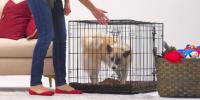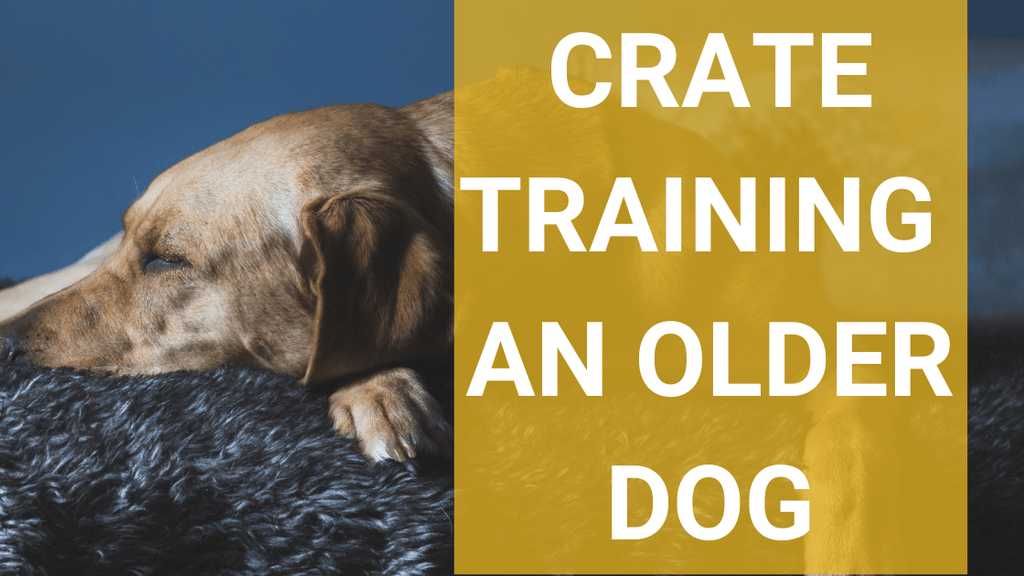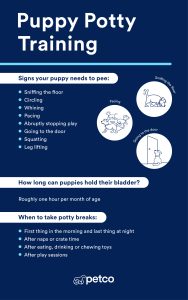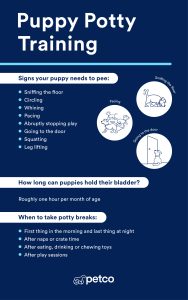Have you ever wondered if it’s too late to crate train your older dog? Maybe you think crate training is only for puppies, or you’re worried your dog won’t adjust.
The truth is, you can teach an older dog to love their crate, and it can make life easier for both of you. Imagine having a calm, safe space for your dog that helps reduce anxiety and keeps your home tidy.
Stick with me, and you’ll discover simple, effective steps to crate train your older dog—no matter their age or past habits.

Credit: www.diamondpet.com
Benefits Of Crate Training Older Dogs
Crate training an older dog might seem challenging at first, but it offers many valuable benefits that can improve both your dog’s life and your daily routine. A crate provides a secure space where your dog can feel safe, which is especially important as they age. Understanding these benefits can help you decide if crate training fits your dog’s needs and lifestyle.
Safety And Comfort
A crate acts as a personal retreat for your older dog, giving them a cozy place to rest without disturbances. Older dogs often need more rest and a quiet spot to recover from daily activities or health issues.
It also prevents your dog from getting into dangerous situations when you’re not around. For example, if your dog has mobility problems, a crate can keep them from falling down stairs or accessing harmful objects.
Behavioral Improvements
Crate training can help reduce anxiety and destructive behavior in older dogs. It creates a predictable routine, which many dogs find calming.
Using the crate as a positive space helps your dog feel secure, reducing barking, chewing, and restlessness. Have you noticed your dog pacing or acting stressed? A crate might be the solution to help them settle down.
Travel And Vet Visits
Traveling with an older dog can be stressful for both of you. A crate-trained dog is easier to transport because they feel comfortable in their crate, even in new environments.
At the vet, a crate provides a familiar space that can reduce your dog’s anxiety during examinations. This comfort can lead to smoother visits and better care for your dog.
Assessing Your Dog’s Readiness
Before you begin crate training an older dog, it’s important to assess if your dog is ready for this change. Older dogs may have different needs and challenges compared to puppies, so understanding their current state helps set realistic goals. Taking a close look at their health, temperament, and past experiences will guide you toward a successful crate training journey.
Health Considerations
Your dog’s physical health plays a big role in crate training success. Older dogs might have joint pain, arthritis, or other medical conditions that make staying in a crate uncomfortable.
If your dog struggles to climb into a crate or stay still for long periods, forcing it could cause stress or injury. Check with your vet to rule out any health issues before you start.
Also, consider your dog’s bathroom habits. Older dogs may need more frequent breaks, so a crate that’s too large or used for long stretches might not be suitable.
Temperament Factors
Every dog has a unique personality, and this influences how they respond to crate training. Is your dog generally anxious, calm, or independent? A nervous dog may take longer to adjust, while a laid-back dog might settle in quickly.
Think about how your dog reacts to new environments and confinement. Have you noticed any signs of stress like excessive barking or pacing when left alone?
Understanding these behaviors helps you tailor your approach and avoid pushing your dog too fast, which can backfire.
Past Training Experience
Older dogs come with a history that impacts how they learn new habits. If your dog has been crate trained before, reintroducing the crate can be easier and less stressful.
On the other hand, if your dog has negative associations with crates or has never been confined, patience and gradual steps are key.
Reflect on any past training successes or challenges your dog has had. This insight helps you design a plan that respects their learning style and past experiences.
Choosing The Right Crate
Choosing the right crate is key to successful training for older dogs. The crate should feel safe and inviting. It must suit your dog’s size and habits. A good crate makes your dog want to spend time inside. Comfort and placement matter a lot for acceptance.
Size And Type
Select a crate that fits your dog well. It should be big enough to stand, turn, and lie down. Too small makes your dog uncomfortable. Too large may reduce the sense of security. Wire crates offer good ventilation and visibility. Plastic crates provide a cozy, den-like space. Consider your dog’s personality when choosing the type.
Location In The Home
Place the crate in a calm, quiet spot. Avoid noisy or high-traffic areas. Near family rooms or where people gather is often best. It helps your dog feel part of the family. Make sure the spot has good airflow and natural light. Keep the crate away from direct heat or cold drafts.
Comfort Additions
Add soft bedding to the crate floor. Use washable blankets or dog beds. Include favorite toys to encourage positive feelings. Avoid overcrowding the space inside the crate. A small water bowl can be handy if crate time is long. Keep the crate clean and fresh-smelling at all times.

Credit: www.purina.com
Step-by-step Training Process
Crate training an older dog can feel challenging, but breaking down the process into clear steps makes it manageable. The key is patience and consistency, allowing your dog to feel safe and comfortable in their new space. Let’s walk through a simple, effective way to introduce the crate and build positive experiences around it.
Introducing The Crate
Place the crate in a quiet, familiar area where your dog usually relaxes. Leave the door open so your dog can explore freely without pressure. Scatter some of their favorite toys or treats inside to spark curiosity.
Have you noticed how dogs react differently to new spaces? Some may approach immediately, while others need time. Watch your dog’s body language to adjust your pace and avoid forcing them inside.
Creating Positive Associations
Feed your dog meals near or inside the crate to link it with something enjoyable. Use treats and gentle praise every time they enter or stay calm inside. This encourages your dog to see the crate as a safe, happy spot.
If your dog shows hesitation, try tossing a treat just inside the crate’s entrance and gradually move it deeper. This small step builds trust and interest without overwhelming them.
Gradual Time Increases
Start with short periods of crate time while you stay nearby. Keep these sessions positive by playing soft music or sitting close. Gradually increase the time your dog spends inside, paying attention to signs of stress.
Ask yourself: Is your dog relaxed or trying to escape? If stress appears, shorten the session and return to positive associations before trying again. This gradual approach helps your dog adjust comfortably, no matter their age.
Common Challenges And Solutions
Crate training an older dog can bring unique challenges. Older dogs may have habits that make crate training harder. Understanding common problems helps in finding good solutions. Patience and gentle steps improve the training process. Here are some challenges you might face and ways to handle them effectively.
Reluctance To Enter
Older dogs often resist going into a crate. The crate may seem strange or uncomfortable. To ease this, make the crate inviting:
- Place soft bedding inside
- Put favorite toys in the crate
- Feed meals near or inside the crate
- Use treats to encourage entry
Allow the dog to explore the crate at their own pace. Avoid forcing them inside. Positive experiences build trust and reduce fear over time.
Excessive Barking
Barking can happen when a dog feels trapped or scared. To reduce barking:
- Ensure the crate is comfortable and well-ventilated
- Cover the crate with a light blanket to create a cozy space
- Exercise the dog before crate time to burn off energy
- Use calm, reassuring tones when nearby
Ignore barking to avoid reinforcing it. Reward quiet behavior with praise or treats.
Separation Anxiety
Older dogs may feel anxious when left alone in a crate. Symptoms include whining, pacing, or trying to escape. To ease anxiety:
- Practice short crate sessions with you nearby
- Gradually increase the time spent alone
- Provide chew toys or puzzles to distract the dog
- Keep departures and arrivals low-key to avoid stress
Consult a vet if anxiety is severe. Gentle, consistent training can help most dogs adjust.
Maintaining Consistency And Patience
Training an older dog to get used to a crate requires steady commitment and a calm approach. You need to stay consistent with your actions and patient with your dog’s pace. This balance helps build trust and makes the crate a safe space rather than a source of stress.
Establishing A Routine
Dogs thrive on routine. Set specific times for crate sessions each day, like after walks or playtime. This predictability helps your dog feel secure and understand what to expect.
Try to keep the crate in a quiet but familiar spot in your home. This reduces distractions and makes the crate part of your dog’s daily life.
Using Rewards Effectively
Positive reinforcement is key. Use treats, praise, or favorite toys to encourage your dog to enter and stay calm inside the crate. The goal is to make the crate a place your dog looks forward to.
Be sure to reward small steps, like sniffing the crate or stepping inside with just one paw. This approach builds confidence and makes training feel achievable.
Monitoring Progress
Keep a simple journal or notes on how your dog responds each day. Look for signs of comfort like relaxed body language or longer stays in the crate. If your dog seems stressed, pause and adjust your approach.
Ask yourself: Is the training pace too fast or too slow? Adjust accordingly and celebrate small wins to keep both you and your dog motivated.
When To Seek Professional Help
Knowing when to ask for professional help can make all the difference in crate training an older dog. Sometimes, challenges go beyond simple training and need expert guidance. Recognizing these moments early can save you and your dog a lot of frustration and stress.
Behavioral Issues
If your dog shows signs of anxiety, aggression, or extreme fear around the crate, it’s a clear sign to consult a professional. These behaviors often stem from deeper emotional problems that require specialized training or behavior modification techniques.
For instance, a dog who growls or snaps when placed in the crate might be reacting to past trauma. A certified dog behaviorist can help identify triggers and create a safe, positive plan tailored to your dog’s needs.
Health Concerns
Sometimes, resistance to crate training can be linked to health problems. If your dog suddenly refuses the crate or shows signs of discomfort, pain, or restlessness, a vet visit is necessary.
Conditions like arthritis or urinary tract infections make confinement uncomfortable. Addressing these issues first ensures your dog associates the crate with comfort, not pain.
Advanced Training Techniques
If basic crate training methods aren’t working, you might need advanced strategies that a professional trainer can provide. They can introduce new techniques such as desensitization, counter-conditioning, or use of specialized equipment.
Sometimes, a fresh approach from an expert helps overcome stubborn habits. Have you tried all basic steps but still face setbacks? A professional can offer solutions you might not have considered.

Credit: cincinnatianimalcare.org
Frequently Asked Questions
How Long Does It Take To Crate Train An Older Dog?
Crate training an older dog can take a few weeks. Consistency and patience are key for success. Gradually increase the time they spend in the crate. Positive reinforcement helps them associate the crate with comfort. Every dog is unique, so adjust the timeline to fit their needs.
Is Crate Training Cruel For Older Dogs?
Crate training isn’t cruel when done correctly. It provides a safe and comfortable space for your dog. Ensure the crate is the right size and introduce it gradually. Use positive reinforcement to create a positive association. Always prioritize your dog’s comfort and well-being.
Can Older Dogs Learn To Love Their Crate?
Yes, older dogs can learn to love their crate. Start by making the crate inviting and comfortable. Use treats and toys to encourage positive associations. Consistent training and patience will help them adapt. Over time, the crate becomes a place of security and comfort.
What Size Crate Is Best For An Older Dog?
Choose a crate that allows your dog to stand, turn, and lie down comfortably. Too much space can hinder training. Measure your dog to find the perfect fit. A well-sized crate helps create a cozy and secure environment. This aids in effective crate training.
Conclusion
Crate training an older dog takes time and patience. Dogs can learn new habits at any age. Keep sessions short and positive for best results. Use treats and praise to encourage good behavior. Stay consistent with your routine every day.
Remember, every dog learns at their own pace. Trust and kindness build a strong bond. Your older dog can enjoy the crate as a safe space. Stay calm and gentle throughout the process. Success is possible with love and practice.

Emily Barker is the founder of ChillDogLife.com, a space dedicated to helping pup parents discover the best dog products, lifestyle tips, and cozy ideas for happier homes.
A lifelong dog lover, Emily combines her passion for pets with a knack for research to share trusted recommendations on everything from toys and furniture to health and everyday care.
Her goal is simple: to make life easier, stylish, and more joyful for dogs and the people who love them.







